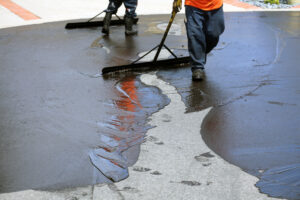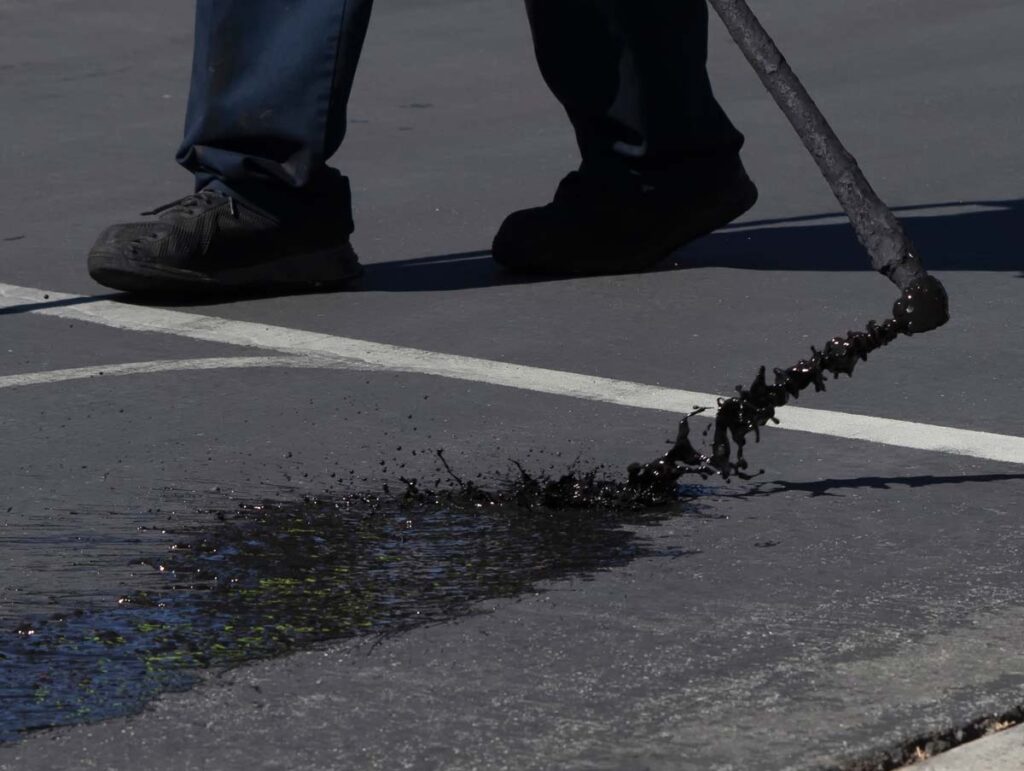Contractors are typically quite good at understanding that industry terms or processes can sometimes baffle clients, so they are seldom surprised if they are asked to explain how sealcoating differs from asphalt paving. If you think of an asphalt pavement as being similar to a layer cake, it might make it easier to understand the differences.
How Is an Asphalt Pavement Similar to a Layer Cake?
Asphalt contractors construct a pavement by installing multiple tiers of asphalt paving until the desired thickness is achieved. Later, sealcoating will be applied to the top of the pavement. Similarly, bakers place multiple layers of cake until the desired height is achieved, then they coat the cake with frosting or icing. Depending on the type of cake, the frosting can add visual appeal, help prevent crumbling, or emphasize certain qualities present in the cake. Sealcoating Austin TX pavements can offer benefits that are not that dissimilar.
What Is Asphalt Sealcoating?
A seal coat is a liquid mixture that contains water, a sealant concentrate, silica sand, and possibly a performance enhancer known as an additive. Sealcoating contractors apply this liquid mixture to pavements that have already been repaired, cleaned, and perhaps primed. When the water in the mixture evaporates, the sealant, sand, and additive particles knit together to form a hard shell that adheres to the pavement. By sealcoating Austin TX pavements, property owners can improve the aesthetics of their parking lot or other pavement, but a seal coat provides extraordinary protection for the asphalt paving by blocking UV rays and other sources of potential damage.
How Often Should Asphalt Sealcoating Be Applied?
Paving contractors usually recommend that you wait at least three months before applying a seal coat to a new asphalt pavement. After that, the frequency will depend on several factors, including the way your pavement is used, how well it has been maintained, and how much traffic it supports. In general, parking lot sealcoating in Austin TX wears off in two to three years, but your specific parking lot could require a shorter or longer interval.
What Else Should I Know About Parking Lot Sealcoating in Austin TX?

First, although there are many sealcoating contractors in the area, not every contractor has the integrity, skills, equipment, and experience to provide you with high-quality results. Therefore, you need to make sure that you select a reputable contractor. You should also be aware of the following points.
1. The seal coat will cover the stripes and markings painted on your pavement, so you will need to repaint them.
2. Some contractors try to make the sealant cover a larger area by eliminating the sand so that they can increase the water. The sand helps enhance traction, especially on wet pavements. Furthermore, increasing the water leaves the mixture too thin to deliver the protection and durability that it should.
3. Sealcoating contractors should not apply sealant too often. The old sealant should be almost worn away before fresh sealant is applied.
4. Sealants require certain weather conditions to cure properly. Reputable sealcoating contractors will postpone a job if conditions are outside of acceptable tolerances.
Whether you need asphalt paving or asphalt sealcoating, asphalt repairs, driveway paving, parking lot striping, asphalt milling, parking lot maintenance, asphalt crack repairs, concrete curbs, asphalt resurfacing, or concrete repairs, you can count on your trusted Austin asphalt paving contractor, RDC Paving. We are fully licensed and insured, and we are known for exceptional workmanship and superior customer service. We serve clients throughout Travis County and beyond. To request a free quote, fill out our online form, or call 512-920-9155 to reach our office in Hutto.




